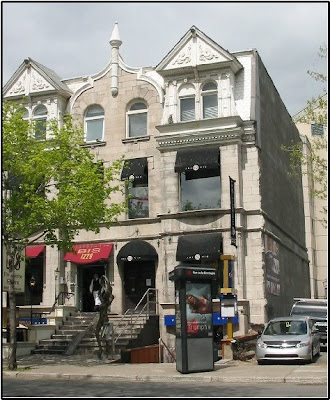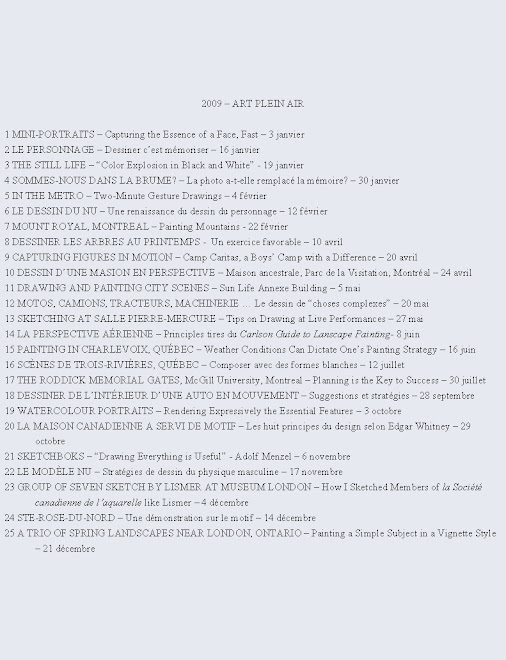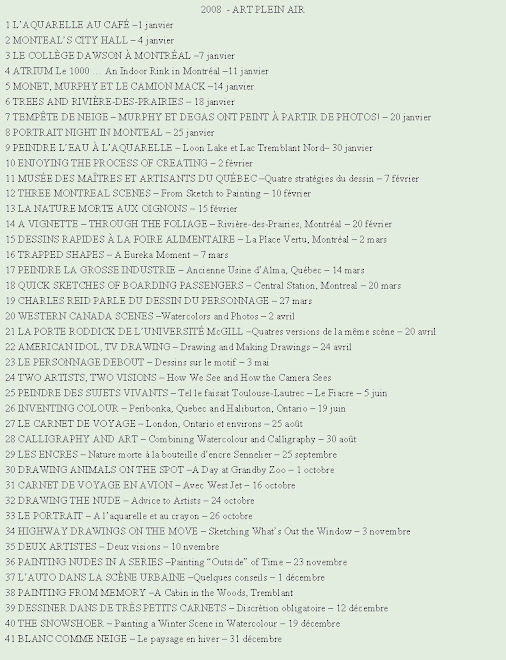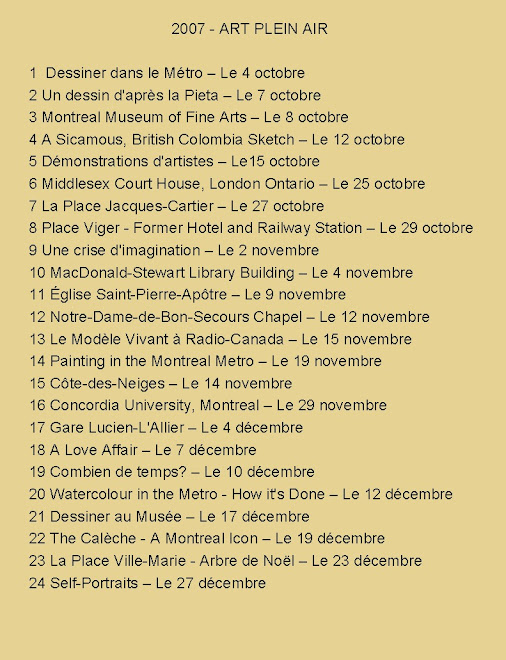
Sketch by Raynald Murphy, 11" x 8.5", using a Micron 03 pen and Fragonard pigments.
Have you ever wondered why an artistic rendition of a scene is quite different than a photo of the same scene?
The other day my friend Yvon and I sketched the same scene sitting side by side. A half hour later we compared our drawings. Both of us worked from the same motif, yet the result was dissimilar. Moreover, our sketches were radically different than the photo taken later. Why?
The other day my friend Yvon and I sketched the same scene sitting side by side. A half hour later we compared our drawings. Both of us worked from the same motif, yet the result was dissimilar. Moreover, our sketches were radically different than the photo taken later. Why?

Sketch by Yvon Masse with a permanent felt tip pen on Somerset (England) paper
Here are some of my observations:
Focus: While I chose to draw attention to the triangular window at the top right and its shadow effect, Yvon initiated his drawing from street level. His focus was from the ground up. The camera is unable to be selective in the same way an artist is. The photo focuses on everything equally. By emphasizing or focusing on certain aspects we both attempted to draw attention to what attracted us.
Focus: While I chose to draw attention to the triangular window at the top right and its shadow effect, Yvon initiated his drawing from street level. His focus was from the ground up. The camera is unable to be selective in the same way an artist is. The photo focuses on everything equally. By emphasizing or focusing on certain aspects we both attempted to draw attention to what attracted us.
Texture: Yvon used a staccato or broken line to symbolize texture. I rendered texture by exaggerating the weather beaten look of the woodwork. Essentially we both treated texture differently because of working style is different. The photo, however, does not capture the feel of the textured surfaces that we saw.
Light and shade: Areas in shadow in a photograph are usually reproduced darker than they are in reality. In a photo, color and value in shadow areas can be deceivingly flawed. However, when working on site one can see into the shade much easier and choose how to reproduce this area depending on one’s purpose. I chose to render the shadow areas under the awnings quite dark. Yvon’s depiction, on the other hand, was lighter and more subdued.
On site influences: When we draw or paint en plein air the scene does not remain static as in a photo. What we put down on the paper is influenced not only by our past experiences, likes and dislikes, but by the constant movement and changes at the site. For example, at one point a truck parked in front of us. Then passersby stood in front of the stairs. We could have opted to include these elements in our drawings had we wished.
Feelings: During on site work all our senses are stimulated. Cold, heat, wind and odors for example can have an influence on the sketch or painting. Even hunger or thirst can be a factor. If, on the other hand, one always works from photo references without the on site experience one misses this sensory experience. After thirty or so minutes of drawing both Yvon and I felt it was time for a coffee. That was probably a good idea because it prevented us both from overworking our drawings.

In general reference photos are useful to record fleeting motion or detail. Working on site permits us to understand our subject by direct observation. If we then choose to re-do the subject in studio these on site sketches will usually prompt us to recall the feelings we had at the time. Working up a studio painting from a combination of sketches and photos is just as good an idea as sketching with a friend!
Note: The building is situated at 1229 de la Montagne, just South of Ste-Catherine Street in Montreal.
Raynald Murphy sca









Aucun commentaire:
Enregistrer un commentaire